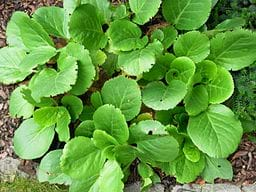Quick Look
Grade Level: 5
Time Required: 15 minutes
Lesson Dependency:
Subject Areas: Earth and Space

Summary
Continuing the "Lost in the Amazon" adventure engineering storyline, students investigate the types of plants and insects they might be able to find and eat in order to survive in the Amazon. They research various plants and insects, identifying characteristics that make them edible or useful for survival. At activity end, students create posters and present their findings to the class.Engineering Connection
Engineers use their critical thinking skills to identify what criteria are important for success and what criteria are not important. Then they make design decisions based on these criteria.
Learning Objectives
After this lesson, students should be able to:
- Investigate edible plants and insects that are found in the Amazon.
- Research plants and insects to identify characteristics that make them edible or useful for human survival.
Educational Standards
Each TeachEngineering lesson or activity is correlated to one or more K-12 science,
technology, engineering or math (STEM) educational standards.
All 100,000+ K-12 STEM standards covered in TeachEngineering are collected, maintained and packaged by the Achievement Standards Network (ASN),
a project of D2L (www.achievementstandards.org).
In the ASN, standards are hierarchically structured: first by source; e.g., by state; within source by type; e.g., science or mathematics;
within type by subtype, then by grade, etc.
Each TeachEngineering lesson or activity is correlated to one or more K-12 science, technology, engineering or math (STEM) educational standards.
All 100,000+ K-12 STEM standards covered in TeachEngineering are collected, maintained and packaged by the Achievement Standards Network (ASN), a project of D2L (www.achievementstandards.org).
In the ASN, standards are hierarchically structured: first by source; e.g., by state; within source by type; e.g., science or mathematics; within type by subtype, then by grade, etc.
International Technology and Engineering Educators Association - Technology
-
Identify and collect information about everyday problems that can be solved by technology, and generate ideas and requirements for solving a problem.
(Grades
3 -
5)
More Details
Do you agree with this alignment?
State Standards
Colorado - Science
-
Each plant or animal has different structures or behaviors that serve different functions
(Grade
2)
More Details
Do you agree with this alignment?
-
All living things share similar characteristics, but they also have differences that can be described and classified
(Grade
4)
More Details
Do you agree with this alignment?
-
Create and evaluate models of plant and/or animal systems or parts
(Grade
5)
More Details
Do you agree with this alignment?
Introduction/Motivation
(Read aloud to the class the following continuation of the "Lost in the Amazon" storyline.)
After you break down the night's camp, you decide to walk around and see how your fellow engineers are doing. Everyone is packing away their supplies and getting ready for another adventurous day in the Amazon. You notice that the pilot is lying under a big leaf, fast asleep. He is still very weak but is starting to eat more.
"Grrrrr." You hear a low roar coming from your stomach and you realize that it is time for breakfast. You walk over to where a group of mechanical engineers, Ken, Daniel and Cari, are preparing today's breakfast.
"How is the food looking?" you ask.
"I think we will only have enough food left for one more day!" Cari responds looking troubled.
"I guess we will have to find some of food," Ken adds as he hands you a buttered roll and a can of apple juice.
In order to find food, you know that you will have to find plants or animals that are safe to eat, but how will you find them? What kind of plants or animals can you eat in the Amazon? Students can reinact this scenario by conducting the research based associated activity Finding Food in the Amazon.
Lesson Background and Concepts for Teachers
None for this lesson.
Associated Activities
- Finding Food in the Amazon - Students investigate a variety of plants and animals common to the Amazon by conducting research. They determine the plant or animal characteristics that make them edible or useful for the trip and learn to categorize them by comparing similarities and differences.
Lesson Closure
Lead a class discussion to ascertain student learning. Discussion prompts: What kinds of foods (plants, animals, insects, mushrooms) are found in the Amazon? Are any foods that you regularly eat available in the Amazon? Would you like a diet based on foods found in the Amazon? Why or why not?
Vocabulary/Definitions
food chain: A succession of organisms in an ecological system that depend on each other for food energy by consuming a lower organism in the chain and in turn, is preyed upon by a higher organism.
Assessment
Activity Worksheet: Have each group complete and hand in the Student Guide Worksheet found in the associated activity, Finding Food in the Amazon. Review their answers to gauge their depth of comprehension.
Subscribe
Get the inside scoop on all things TeachEngineering such as new site features, curriculum updates, video releases, and more by signing up for our newsletter!More Curriculum Like This

Students are introduced to the (hypothetical) scenario in which they are a team of EnviroTech engineers returning to the U.S. from a conference in Brasilia, Brazil. When their plane crashes deep in the Amazon forest, they work in groups to overcome various obstacles in their quest to reach help as q...
Copyright
© 2013 by Regents of the University of Colorado; original © 2005 Colorado School of MinesSupporting Program
Adventure Engineering, Colorado School of MinesAcknowledgements
Adventure Engineering was supported by National Science Foundation grant nos. DUE 9950660 and GK-12 0086457. However, these contents do not necessarily represent the policies of the National Science Foundation, and you should not assume endorsement by the federal government.
Last modified: June 13, 2019






User Comments & Tips